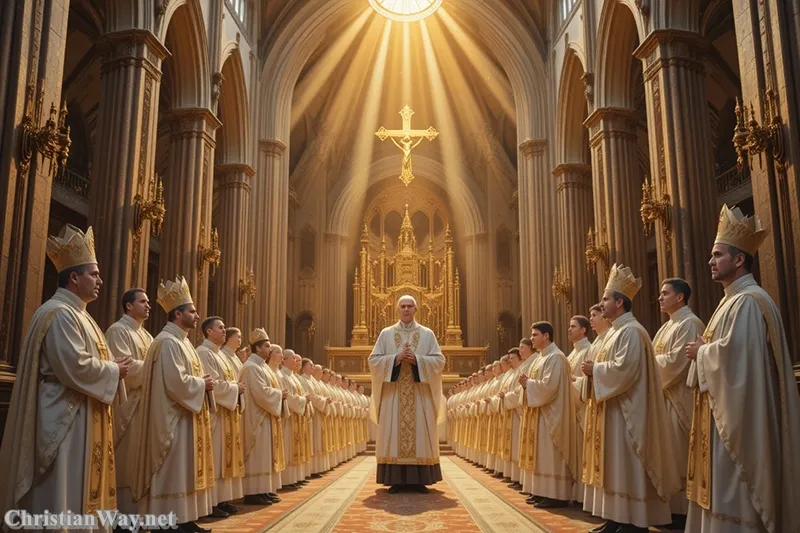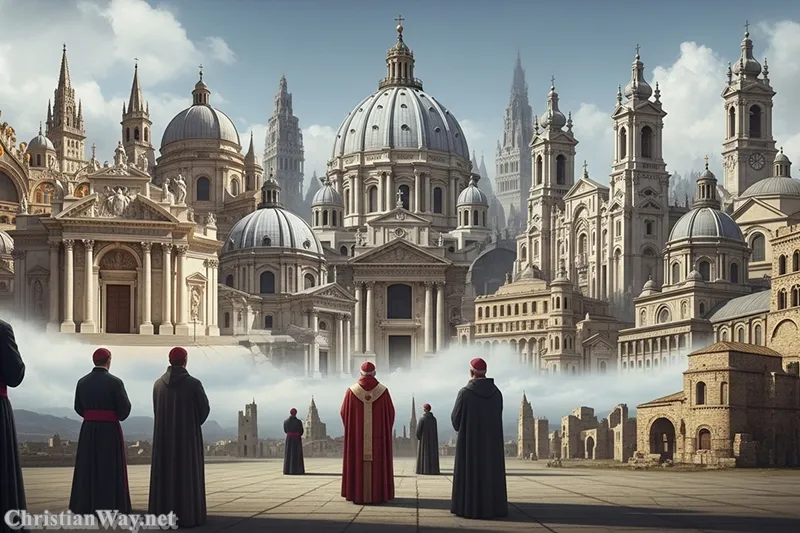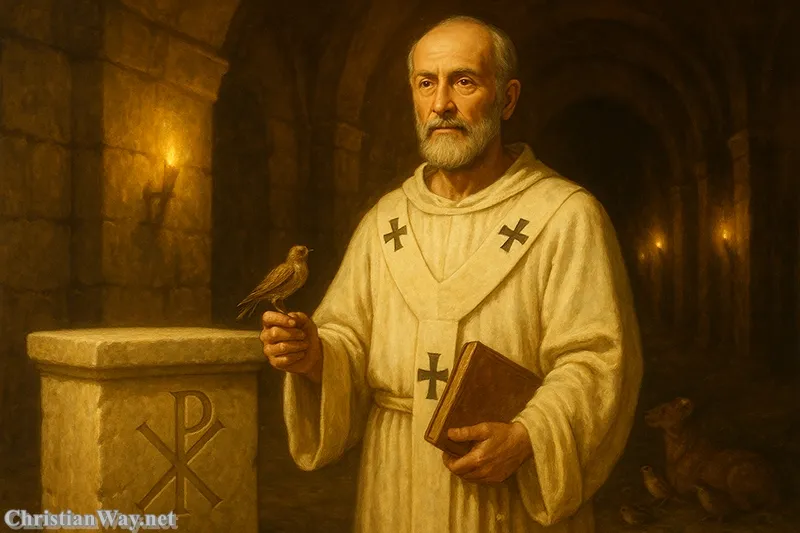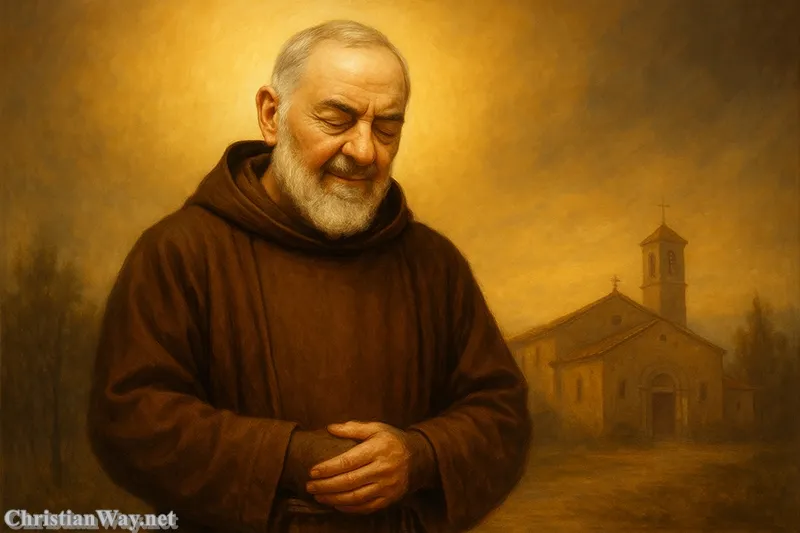Dear friends in Christ,
Every generation of believers looks toward certain figures within the Church who hold a unique responsibility — not only of leadership but of unity, faith, and love. Among these, the Archbishop stands as a shepherd of shepherds, one called to carry the burden of oversight with humility and prayer. His ministry is not a position of privilege but of profound service, entrusted with maintaining the communion of the Church and ensuring that Christ remains at the center of all pastoral life.
The title “Archbishop” may sound administrative or hierarchical to the modern ear, yet in truth it represents something deeply spiritual. It embodies the ancient call of Christ to Peter and the Apostles: “Feed my sheep” (John 21:17). An Archbishop stands in that same apostolic tradition — not as a ruler in worldly sense, but as one who guards the flock of God from error, division, and despair.
The Historical Roots of the Archbishop’s Ministry
From the earliest centuries of Christianity, certain bishops were recognized for their spiritual authority over regions where multiple dioceses existed. These bishops, often in key cities or ancient centers of faith, were given the responsibility to care not only for their own dioceses but also to guide their fellow bishops. Thus arose the office of the metropolitan bishop, later known as the Archbishop.
In the early Church, the unity of faith was fragile, especially as heresies and schisms threatened the body of Christ. The Archbishop became a sign of stability and communion — ensuring that the local churches remained united with the See of Rome in doctrine, worship, and pastoral care. This role continues today, bridging local pastoral realities with the universal mission of the Church.

The ancient Patriarchates — such as Rome, Constantinople, Alexandria, Antioch, and Jerusalem — were led by bishops of remarkable spiritual stature. In time, these bishops became known as Archbishops or Patriarchs, serving as symbols of both unity and faithfulness to apostolic teaching. Their primary mission was, and remains, to ensure that the Gospel is proclaimed in its purity and lived out in its fullness.
The Spiritual Authority of an Archbishop
At its heart, the role of an Archbishop is not about control or governance but about communion and oversight. The word episkopos in Greek means “overseer” — one who watches over. An Archbishop carries this calling not merely by administration, but through vigilance of soul.
He is called to be a spiritual father to the bishops under his care, a teacher of truth, and a servant of unity. The Archbishop’s pastoral authority flows from his own fidelity to Christ. When he preaches, celebrates the Eucharist, or ordains priests and deacons, he stands as a visible sign that the Church is one body with many members.
In Catholicism, for example, Archbishops preside over archdioceses — often larger or historically significant dioceses — and sometimes over entire ecclesiastical provinces. In the Orthodox Church, they likewise serve as spiritual overseers, uniting multiple dioceses within a single tradition of faith and worship. Among Anglicans and Protestants, the role of Archbishop continues in varied forms, but always with the same goal: to nurture unity, uphold Scripture, and preserve the faith once delivered to the saints (Jude 1:3).
Shepherds of Communion and Peace
An Archbishop must embody Christ’s own heart — a shepherd who knows his sheep, carries the lost upon his shoulders, and protects the flock from harm. In a fractured world where even believers can drift into isolation or division, the Archbishop reminds us that faith is communal.
The prophet Jeremiah lamented the scattering of God’s people: “Woe to the shepherds who destroy and scatter the sheep of my pasture!” (Jeremiah 23:1). The Archbishop stands as an antidote to such scattering — a guardian who gathers, reconciles, and heals. His ministry, therefore, is not only institutional but deeply pastoral, centered on Christ the Good Shepherd who lays down His life for the sheep (John 10:11).
In times of confusion or moral darkness, the Archbishop’s voice calls the faithful back to truth. In times of suffering or persecution, he becomes a source of courage and hope. And in times of joy, he leads the people of God in thanksgiving and praise.
The Archbishop and the Bishops
Within the hierarchy of the Church, the Archbishop does not stand above his fellow bishops as a monarch, but rather among them as a brother entrusted with a particular responsibility. In Catholic and Orthodox tradition alike, the Archbishop presides in charity, ensuring harmony among the local churches.
At synods or councils, he acts as a voice of unity — helping to discern the will of God through prayer and consultation. His authority is meant to be exercised in humility and obedience to Christ, never as personal power but as service for the sake of the Gospel.
This collegial model reflects the apostolic age itself, where Peter and the Apostles worked together, each fulfilling his mission while remaining bound in the unity of the Spirit. So too, the Archbishop today holds a sacred duty: to protect the bond of peace that keeps the Church whole (Ephesians 4:3).
The Archbishop as Teacher of the Faith
Among the most sacred duties of an Archbishop is the teaching of faith. Through pastoral letters, homilies, and catechesis, he ensures that the Word of God is proclaimed in truth. His teaching must be clear, faithful, and compassionate — never condemning, but always calling people toward the love of Christ.
When Saint Paul wrote to Timothy, he urged: “Preach the word; be ready in season and out of season; reprove, rebuke, and exhort, with complete patience and teaching” (2 Timothy 4:2). This same charge falls upon every bishop, and in a special way, upon the Archbishop who must guard the orthodoxy of all the churches entrusted to him.
In a world where truth is often reduced to opinion, and faith is treated as private sentiment, the Archbishop serves as a public witness to the unchanging Gospel. He calls both clergy and laity alike to holiness, reminding the Church that faith without love is nothing, and doctrine without mercy is empty.
The Archbishop’s Prayer and Hidden Life
Though he may appear as a figure of authority, the Archbishop’s greatest strength is not found in his public ministry but in his hidden life of prayer. Before he can speak for God, he must first listen to God. Before he can guide others, he must allow himself to be guided by the Holy Spirit.
The Archbishop rises early to pray for his priests, for the people under his care, for the poor, and for the conversion of the world. In his solitude, he carries the weight of countless souls, trusting that Christ’s grace will accomplish what human strength cannot.
In this way, the Archbishop reflects Christ in Gethsemane — bearing the burden of intercession for the Church, praying not for comfort but for faithfulness. His ministry is rooted in that holy stillness where heaven touches earth.
Archbishops in the Life of the Church Today
Across Christian traditions, Archbishops continue to play vital roles in guiding believers through the complexities of modern life. Whether it be in Rome, Canterbury, Constantinople, or the great cathedrals of Africa and the Americas, they remain visible signs of unity in the Body of Christ.
In our time, their witness is needed more than ever. The modern world is filled with voices — political, ideological, digital — each claiming authority and truth. But amid the noise, the Archbishop’s vocation is to echo the voice of Christ: gentle yet firm, merciful yet uncompromising in truth.
When an Archbishop speaks out for justice, the dignity of life, or the sanctity of marriage and family, he does so not as a politician but as a pastor. When he calls for reconciliation, he speaks as one who bears the wounds of Christ’s Church in his heart. And when he celebrates the Eucharist, he stands as a bridge between heaven and earth, drawing the faithful into the mystery of divine love.
The Archbishop and the People of God
Ultimately, the Archbishop’s mission is not about titles or robes, but about love. His authority is meaningful only insofar as it serves the people of God. He is the shepherd who must know his flock, the father who must listen to the cry of the poor, the teacher who must guide with compassion.
The faithful, in turn, are called to pray for their Archbishop, to support him in his mission, and to see in him a reflection of Christ’s own leadership. As Saint Ignatius of Antioch wrote in the second century: “Where the bishop is, there is the Church.” The Archbishop, as the chief shepherd of a province or region, embodies this unity in a wider sense — ensuring that all the local churches remain bound in faith, hope, and love.
Reflect and Pray
The Archbishop’s ministry is a mirror of Christ’s own — one of love, humility, and steadfast faith. In him, we see not a prince of power, but a servant of the Gospel. He walks among the people of God as a sign of unity, a teacher of truth, and a witness to the mercy of Jesus Christ.
May we pray for all Archbishops throughout the world — that they may remain faithful to their calling, guided by the Holy Spirit, and strengthened by the prayers of the faithful.
Heavenly Father, grant wisdom and holiness to those who shepherd Your Church as Archbishops. May they lead with humility, teach with truth, and serve with love. Through their ministry, may Your people be drawn ever closer to Your Son, our Lord Jesus Christ. Amen.
— Fr. John Matthew, for Christian Way





